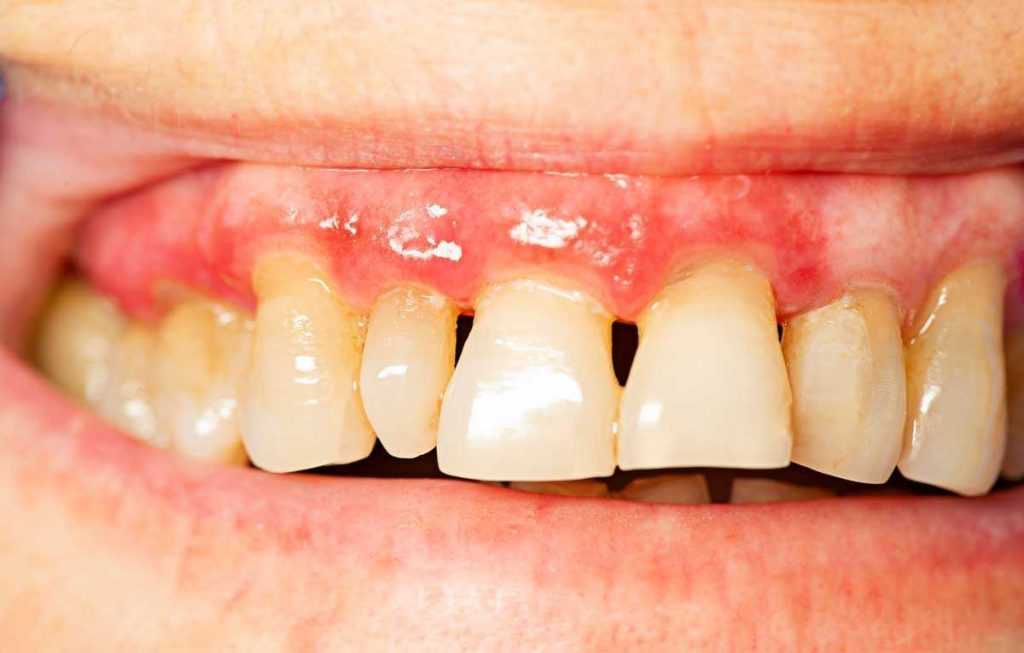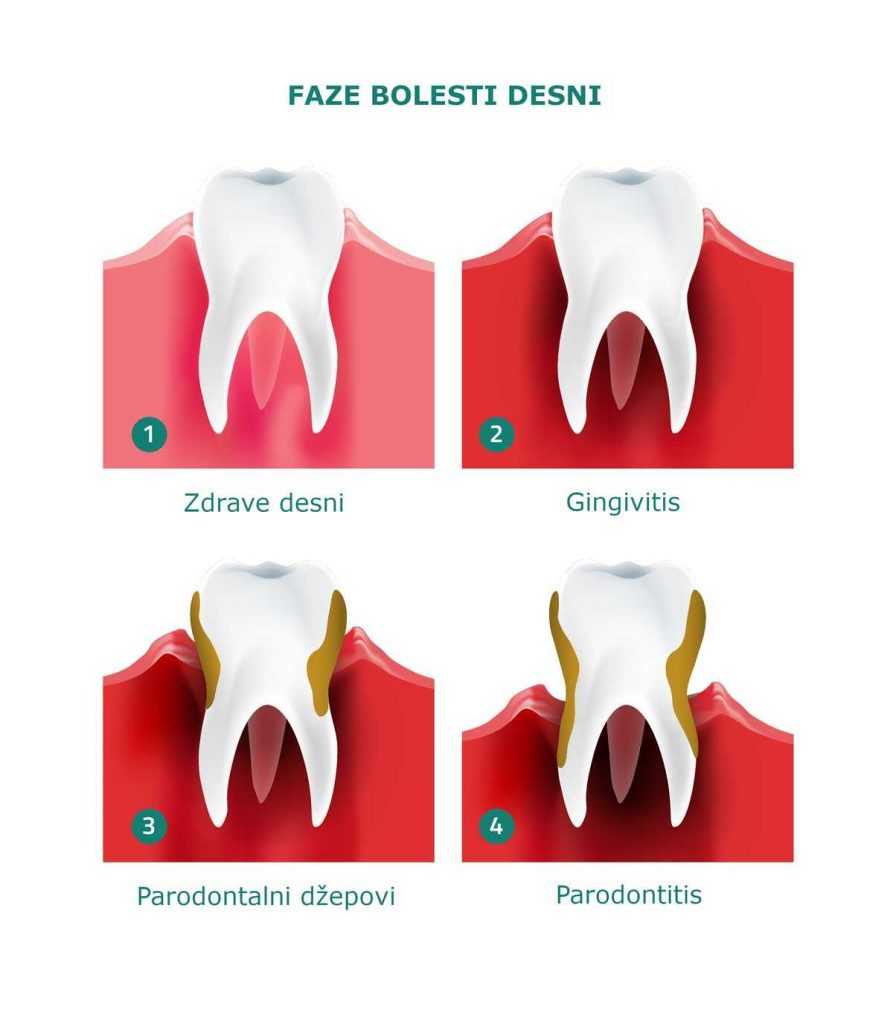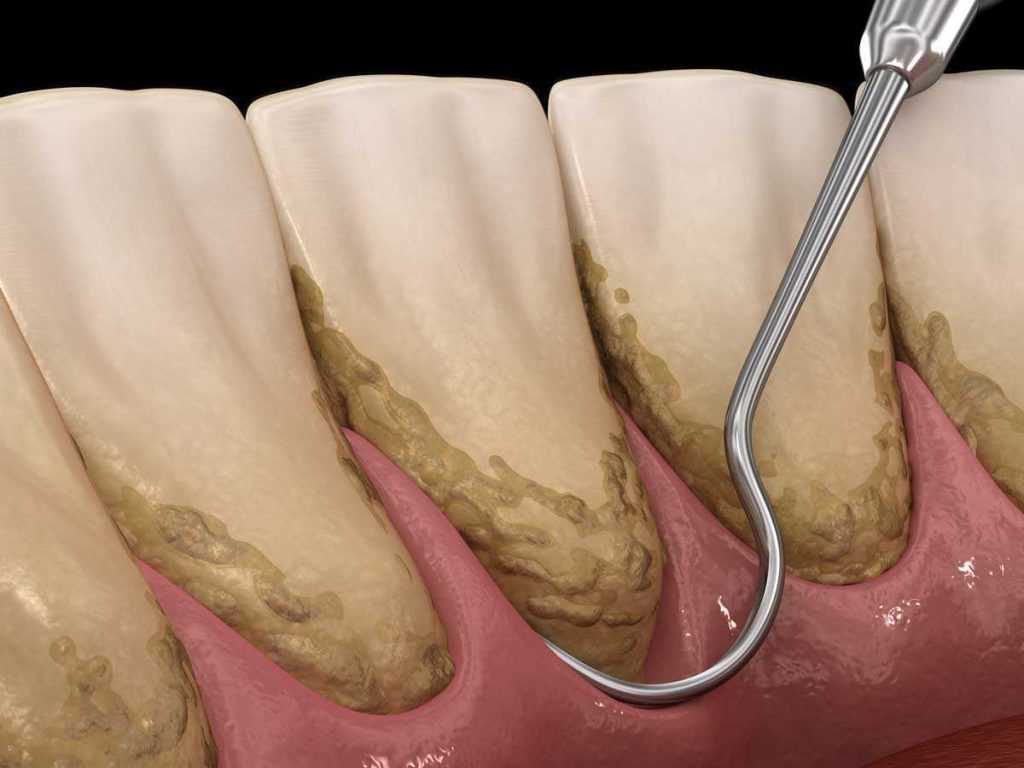Periodontitis is, apart from caries, the most common oral disease that causes tooth loss. Therefore, it is very important to know the symptoms of periodontitis, so that it can be timely treated.
What will you learn in this article?
In this article, read about the following topics:
- What is periodontitis?
- What are the symptoms of periodontitis?
- How is periodontitis treated?
- What if we lost most of our teeth due to periodontitis?
What is periodontitis?
Periodontitis is a disease that affects the supportive tissues of the tooth, mainly the gums, bone, and periodontal ligament which is the connection between the tooth and the jawbone.
The main cause of periodontitis: calculus or tartar
The main cause of gum disease, gingivitis and periodontitis, are hard and soft deposits on teeth, specifically tartar and dental plaque.
Plaque is a thin film of saliva, minerals, bacteria and food, which undergoes mineralization within 24 to 48 hours and develops into tartar.
In fact, we could say that the main cause of periodontitis is inadequate oral hygiene which allows the accumulation of tartar and plaque.

Other causes
In addition to plaque and tartar, studies show that some people have a higher genetic susceptibility to periodontitis.
Systemic diseases (e.g. diabetes) or medicines (e.g. haemostatic agents), and hormonal changes (e.g. pregnancy) can also contribute to the development of periodontitis.
Dangers of periodontitis
Periodontitis leads to the decay of supporting structures of teeth and resorption of the bone in which the tooth in the jaw is located, which consequently leads to wobbliness of teeth and tooth loss.
There are evidence indicating a link between periodontitis and cardiovascular diseases, rheumatoid arthritis and different autoimmune diseases.
This means that periodontitis can jeopardize the overall health of a patient.

What are the symptoms of periodontitis?
The symptoms that may indicate a risk of developing periodontitis are:
- Gum redness
- Gum tenderness or pain
- Bleeding of gums when brushing your teeth, flossing or spontaneously
All of the above symptoms point to gingivitis, that is, the acute inflammation of the gums that we can get rid of easily with proper dental hygiene.
It is important to act early on and be persistent.
If you notice early or advanced symptoms of periodontitis, there is no time to lose!
Our clinic uses a very thorough protocol that achieves excellent results in the treatment of periodontitis.
Have trust in us and contact us in case you need advice or have a question.
Get a professional check-up without leaving your home!
We offer a virtual dental examination. Learn more!
Symptoms of advanced periodontitis
The symptoms that, unfortunately, point to advanced periodontal disease are:
- Very sensitive gums that bleed easily
- Bad breath
- Periodontal pockets: worn tooth cervices and gums pulling away from the teeth
- Wobbliness and tooth loss
- Big black triangles between teeth
- Caries at the roots
- Tooth sensitivity to heat and cold
How is periodontitis treated?
Periodontitis has several stages. At the initial stage, it is enough to work on preventing the spread of the disease.
The Apolonija Dental Clinic has developed a periodontal protocol for the initial stage of periodontitis. It involves an individual assessment of disease progression, individual treatment and monitoring.
Periodontal protocol in Apolonija
1. Initial periodontal therapy
- Our dentists need to administer an initial periodontal therapy to remove the causes of gingivitis.
- The initial periodontal therapy will enable the tissue to start healing.
2. Regular cleaning of tartar
- A patient suffering from periodontitis should visit 3 to 4 times a year depending on the stage of disease progression for tartar cleaning and, if necessary, for occasional deep root cleaning.

3. Proper oral hygiene
- Regular and persistent oral hygiene is a priority in the fight against periodontal disease. It is necessary to brush your teeth two to three times a day and use dental floss or an interdental brush.
- Mouthwash is also recommended, but under the supervision of a dentist. It is best to plan a proper oral hygiene routine with a dentist or specialist in periodontics.
4. Monitoring and exchange of information
- Long-term persistence is very important in the treatment of periodontitis or keeping it under control.
- As patients eventually begin to ignore advice and believe that the disease has gone away forever, we have developed a system of monitoring and exchanging information with patients.
- Our system and protocol thus lead to satisfactory results in the treatment of periodontitis.
Advanced periodontitis
Unfortunately, periodontitis can destroy tissue and jawbone for years before the patient reacts appropriately.
In addition to neglecting symptoms, one of the reasons for this is often the absence of pain, except in some specific clinical pictures of periodontitis.
If bacteria penetrate into the deeper layers around teeth, progressive and irreparable loss of jaw bone will occur and in turn the loss of teeth.
Regenerative therapy of the jawbone
For the treatment of advanced periodontitis, we will have to apply advanced medical methods of jaw bone regeneration.
It is a method of guided bone regeneration, either by replacement bone materials or by transplanting the patient’s bone from one place to another.
Regeneration is stimulated by a blood derivative, plasma rich in growth factors: PRGF-Endoret.
Read more about guided bone regeneration on our website [LINK WEB “Bone regeneration”].
What if we lost most of our teeth due to periodontitis?
Sometimes patients react only after a loss of a large number of teeth has occurred, and the remaining teeth are non-functional and loose.
This essentially means edentulism, because for any treatment or replacement of teeth, unfortunately, very often the only option is to remove the remaining teeth.
However, there are solutions.
All-on-4: a bridge on dental implants
One of the main purposes of a bridge on dental implants, All-on-4, is precisely to help completely edentulous patients.
In addition to gum healing and bone regeneration and augmentation, All-on-4 can be an ideal solution for restoring lost teeth in periodontal patients.
Find out more about a bridge on dental implants, All-on-4, on our website “All-on-4, a dental bridge on implants”.
Did you find out what you wanted to know?
In this article you have learned more about the origin and treatment of periodontitis. You may want to learn more about the following topics:
Our clinic combines half a century of tradition and quality with the highest aesthetic and health standards in dentistry.
We believe that we can also help treat your problems caused by periodontitis.
Have trust in us and contact us in case you need advice or have a question.
Get a professional check-up without leaving your home!
We offer a virtual dental examination. Learn more!


